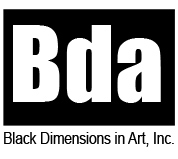Featured Artist: Elizabeth Zunon
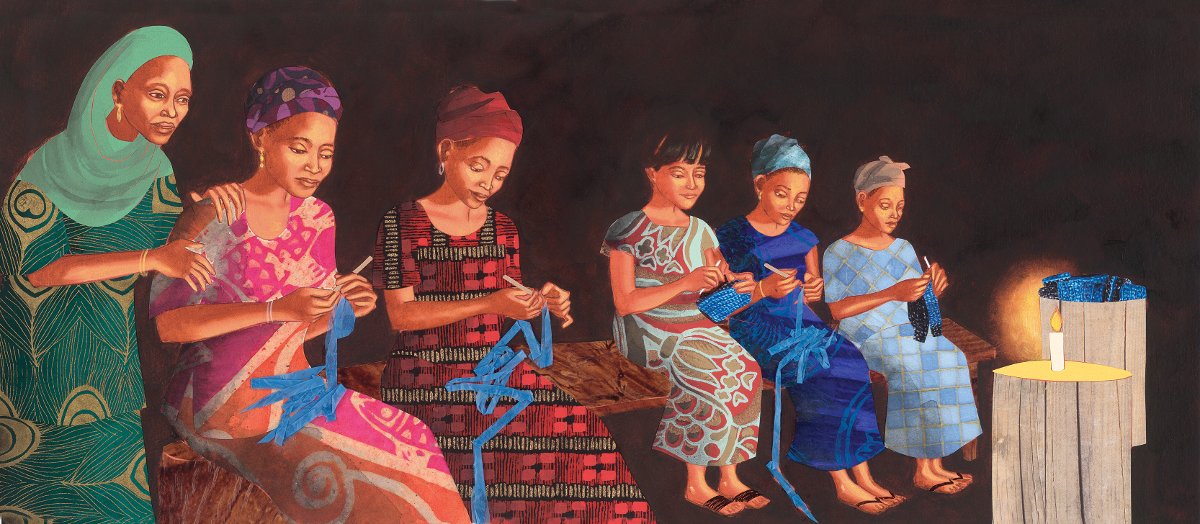
Greetings everyone, and welcome to BDA’s first artist feature. I’m very happy to present one of my favorite illustrators, Elizabeth Zunon.
Marcus (BDA): Hi Liz. Can you please introduce yourself and tell us about what you do?
Liz Zunon: Sure! I am a painter, fine artist, crafter and illustrator. I live in Albany, NY, where I was born, and work primarily in the field of children’s book illustration: illustrating biographical and non-fiction themed picture books for readers aged 4-9. Much of my artistic inspiration comes from memories of my childhood in the Ivory Coast (Cote d’Ivoire), West Africa. I try and reflect the multicultural and multifaceted world we live in through my illustration work.
What’s your earliest memory of creating art?
After having learned to write the Alphabet, I remember drawing a letter “E” for my name (Elizabeth), in purple marker, with way too many horizontal lines through it. I decorated the paper I drew this on with multicolored polka dots. I was so proud!
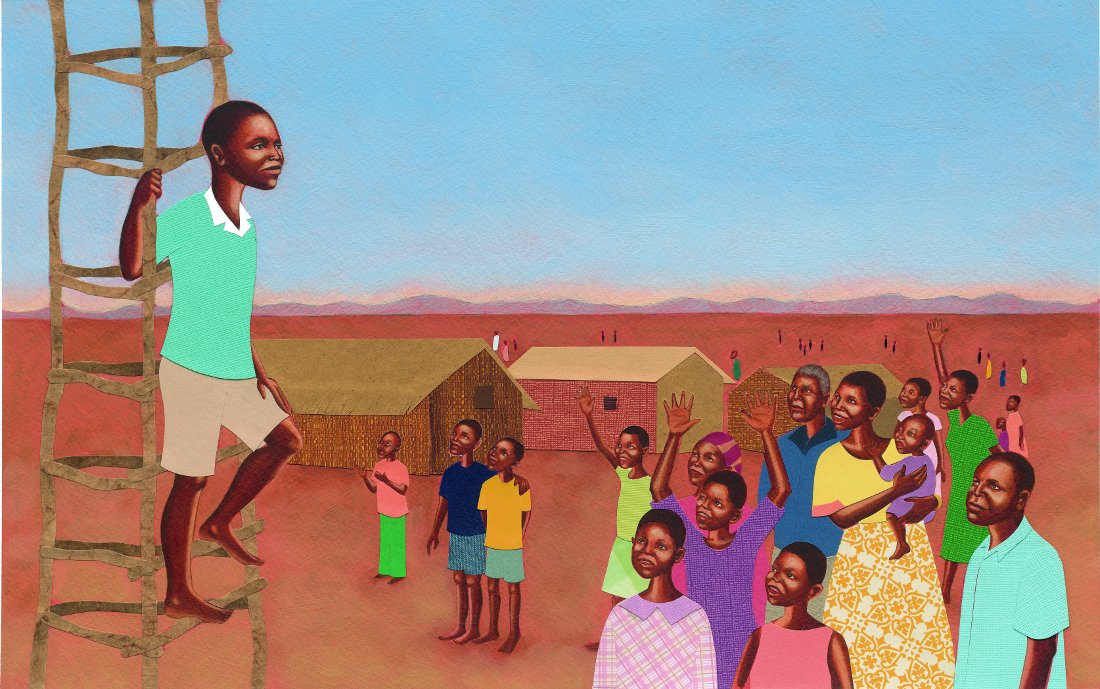
Do you remember the moment when you knew you wanted to create art professionally?
I think it was after having attended a summer session at SUNY Oswego after my sophomore year in High School. After taking a handful of art classes there, then returning to my regular high school art classes, I thought I could really throw myself into a career as an artist.
What was your first professional illustration job?
The first job I was asked to do was storyboard an independent film…. I didn’t sign a contract and never got paid… I don’t think the film ever went anywhere, but when I look back at that assignment now, I realize how well it helped me create visual sequences with my art. My first “real” paid professional job was illustrating My Hands Sing the Blues: Romare Bearden’s Childhood Journey- My first picture book!
How did the years that you spent in the Ivory Coast inform your creativity?
I think my time in the Ivory Coast nurtured my love of storytelling; be it oral, musical, visual, theatrical or dance-based, I love getting lost in stories. I was exposed to art, creativity and ingenuity everywhere. One of the things I miss the most about life in the Ivory Coast is the bright, colored patterned fabrics of everyday clothing. The warm, hot air and the warm, hot colors of life in the tropics are two elements that I try to evoke in my work.
What is your favorite medium, and why?
I love the unctuousness of oil paint! It can be used thickly and heavily or applied in thin layers, sort of watered down with linseed oil. Since it takes at least a few days to dry, it feels like oil paint is a living, breathing medium. I can try to coerce it to behave the way that I want, but it requires me to be attentive to its state (wet, dry, half-dry, sticky…). It keeps me on my toes and is never boring!
Tell us about Martha and the Slave Catchers. How does it differ from your previous illustration projects?
Martha and the Slave Catchers, written by Harriet Hyman Alonso, is my first illustrated Middle Grade Novel. It tells the story of Martha Bartlett and her little brother Jake, who gets kidnapped after the Fugitive Slave Law of 1850. Unlike my other illustration projects which I create in full-color oil paint and collage, the illustrations for Martha and the Slave catchers consist of line drawings, which were created with black pen and marker and gouache paint. I then scanned the drawings onto my computer and digitally filled in some areas in black rather than by hand.
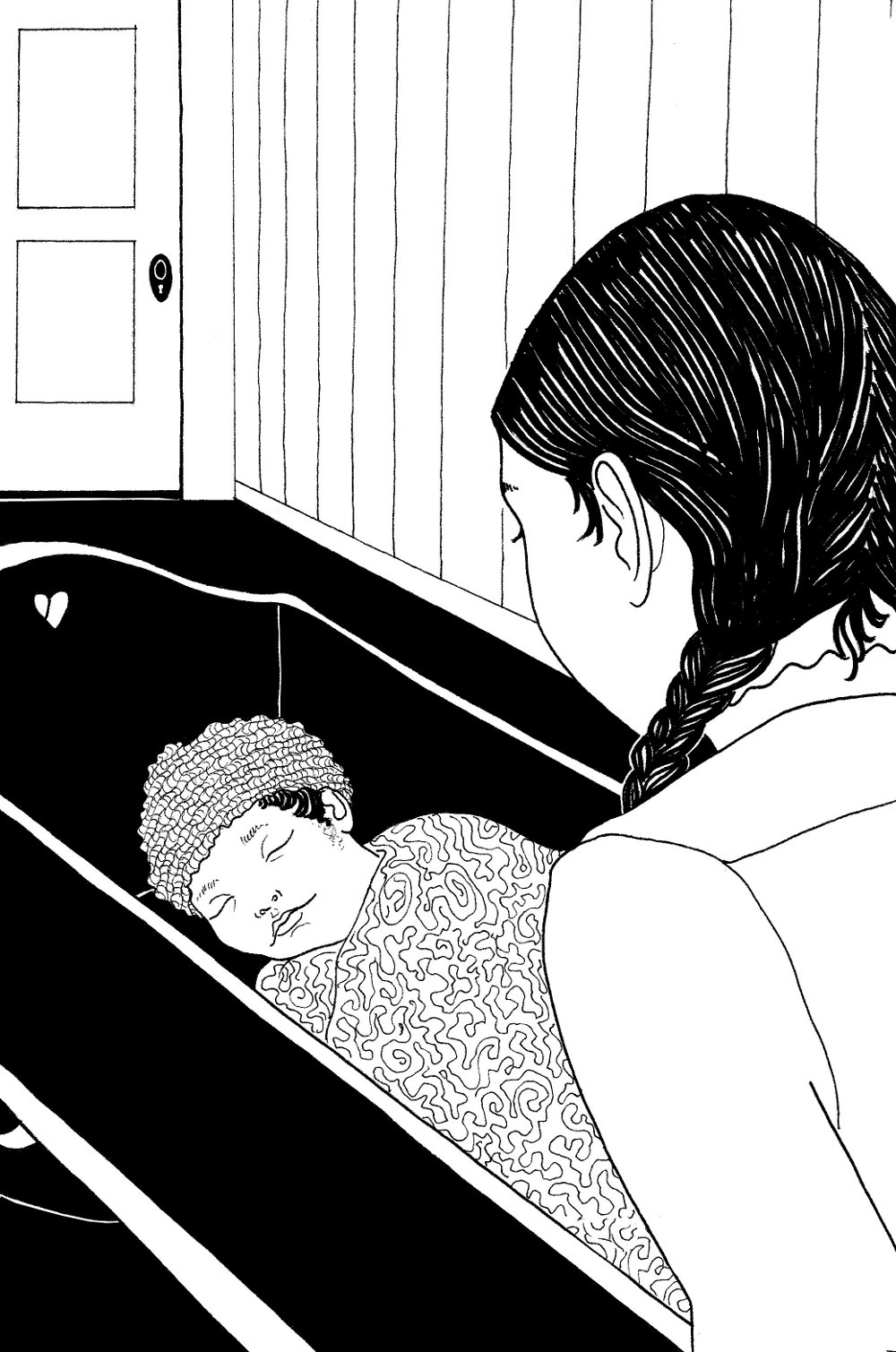
You’ve illustrated many stories which cover a wide range of subject matter. How, if at all, does your creative process vary from one story to the next?
My creative process doesn’t really change too much from story to story. I always start with a doodling phase, followed by a research phase, a photographic reference phase (in which take pictures of myself posing as the characters in the books, using these photos as reference), a sketch phase and final color phase. My creative process consists of gathering bits of information and visual material, then weaving it all together into a final product.
You’ve done workshops and school visits. What do you enjoy most about working with children?
Their wealth of knowledge! And the connections they draw from the things I might talk about, or something they read about in one of my books. Young children often know more than we give them credit for, and I’m constantly impressed with the connections they draw between something they’ve read in a book and their own lives.
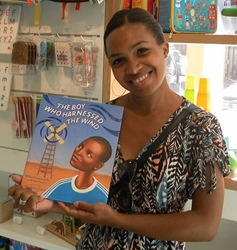
You recently announced that you’ll be writing and illustrating a book for the first time. Whatcan you tell us about this story?
I’m currently in the middle of creating the final color illustrations for this project! Grandpa Cacao tells the story of a little girl baking a chocolate cake with her Dad while he tells her about the activities of her grandfather, a cacao farmer in the Ivory Coast. It is a fictionalized account of my own grandfather’s life in the Ivory Coast, whom I never met. This story has been brewing in me for years. I love books about process and about where things come from and how things came to be. Most kids (and adults!) love chocolate, but I don’t think many kids know that chocolate actually comes from a fruit that grows on a tree that needs to be harvested and prepared before it is turned into chocolate. Grandpa Cacao is set to be published by Bloomsbury Press in May 2019.
To learn more about Elizabeth’s work, check out her website.
